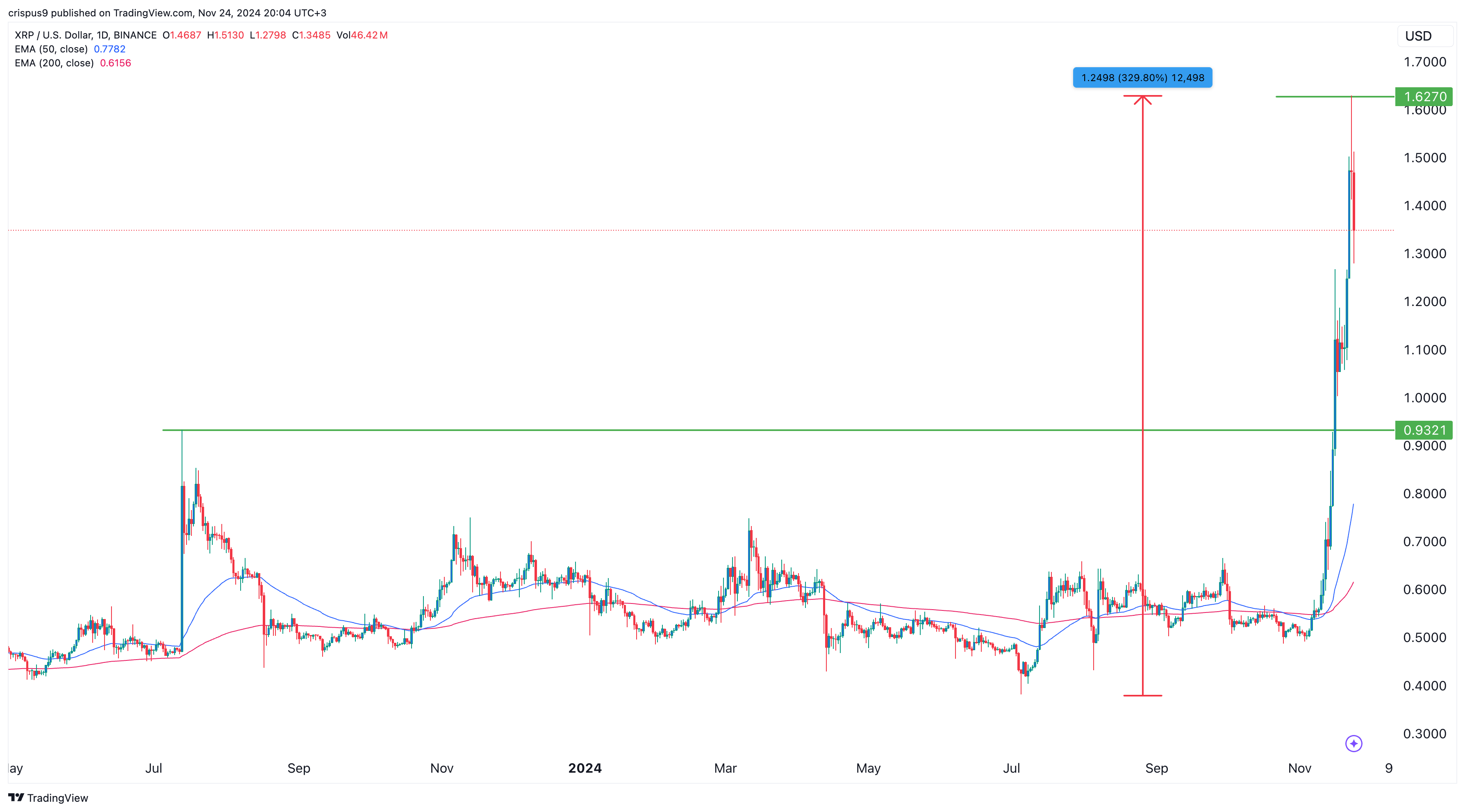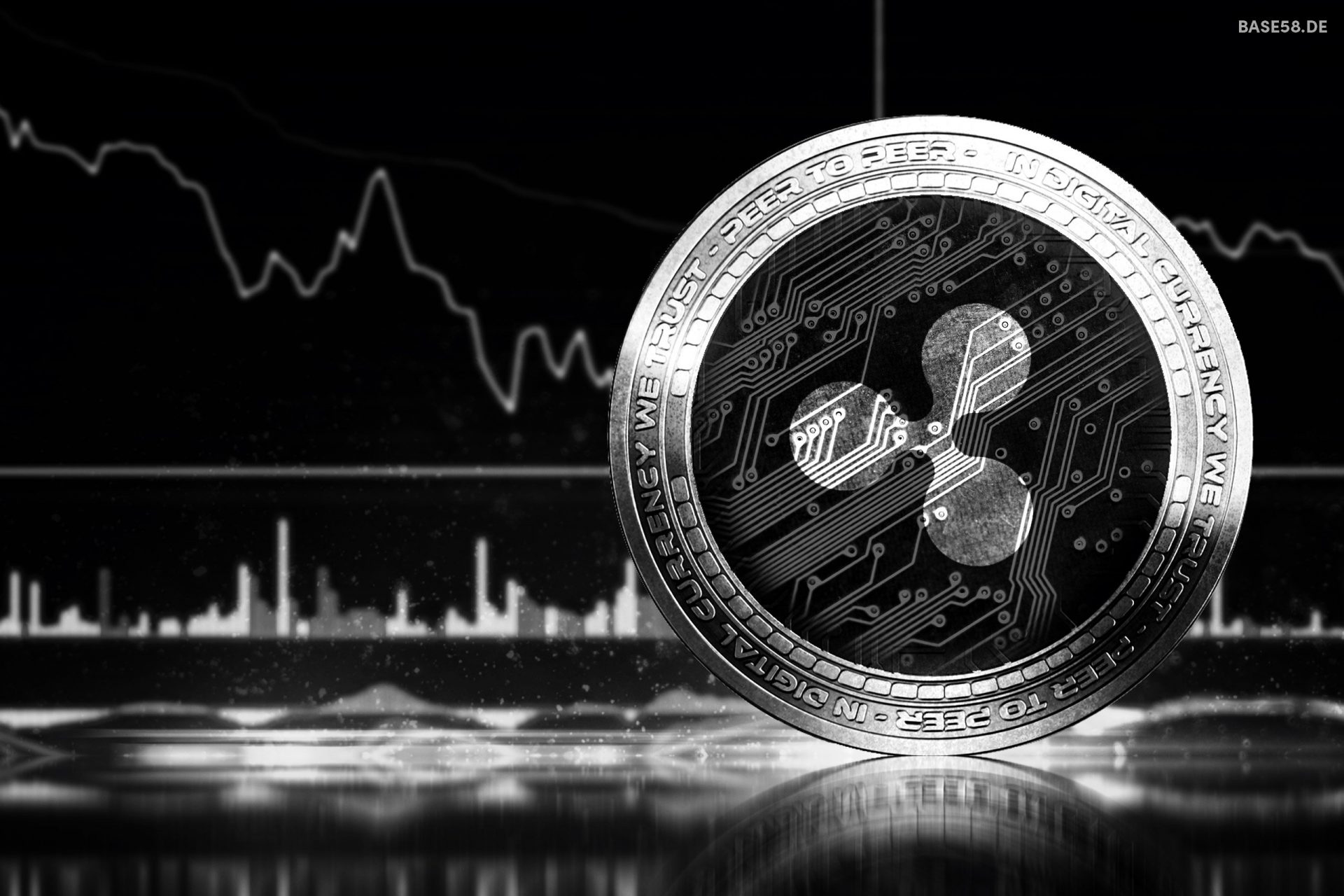Ripple price suffered a harsh reversal during the weekend, moving into a bear market as the recent momentum faded. The XRP token dropped from the year-to-date high of $1.6270 to a low of $1.300.
XRP price analysis: why did Ripple crash?
The XRP coin dropped sharply as the recent rally took a breather. This decline was mostly because of Bitcoin’s weakness during the weekend and as some investors took a breather after a solid performance.
Bitcoin retreated to $97,000 in the overnight session as the journey to $100,000 stalled. In most cases, altcoins like Ripple, Cardano, and Solana often drop sharply when Bitcoin is losing momentum.
Technically, as we warned about Stellar Lumens, the XRP price dropped because of mean reversion. At its highest level last week, XRP was up by over 165% above the 200-day Exponential Moving Average (EMA). It was also up by 150% from its 50-day moving average. Mean reversion is a situation where an asset drops back to the moving average.
XRP also dropped after the coin formed a doji candlestick pattern, which is characterized by a small body and long upper and lower shadows. In most cases, a doji leads to a strong bearish breakout.
The ongoing Ripple retreat could push more retail traders to start liquidating their positions in a bid to preserve their profits. Besides, this is a coin that jumped by over 320% from its lowest point in July.
Therefore, the coin may drop to the next key support at $1.00, which is a psychological level and also slightly above the key point at $0.9321, its highest level in July last year. This price action is known as a break and retest and is one of the most popular continuation signs in the market.
The alternative scenario is where the coin consolidates at the current level as it forms either a bullish flag or a pennant, a popular continuation pattern. If this happens, more gains will be confirmed if the XRP price rises above the key resistance level at $1.6270, its highest level this year.

Why Ripple has surged
The main reason why the XRP price has soared is that the US elected Donald Trump to become the next president. He has already announced several crypto-friendly appointments, including Howard Lutnick and Scott Bessent. He is also friendly with Vivek Ramaswamy and Elon Musk, who have expressed support for the industry.
Therefore, there is a likelihood that he will also appoint a crypto-friendly head of the Securities and Exchange Commission (SEC). If this happens, there is a likelihood that Ripple’s legal issues will end in 2023.
Ripple is also expected to launch its stablecoin, RLUSD, soon as it seeks to battle it out with Tether. If successful, it would lead to substantial profits for Ripple Labs since stablecoins have some of the highest margins in business. Still, the challenge is that the industry is highly competitive, with newer stablecoins like PayPal’s PYUSD struggling to gain market share.
The other big issue is that Ripple’s XRP Ledger network has struggled to gain traction among developers. Data shows that the network has a total value locked (TVL) of just $14.87 million, making it smaller than newer networks like Base and Sui.












